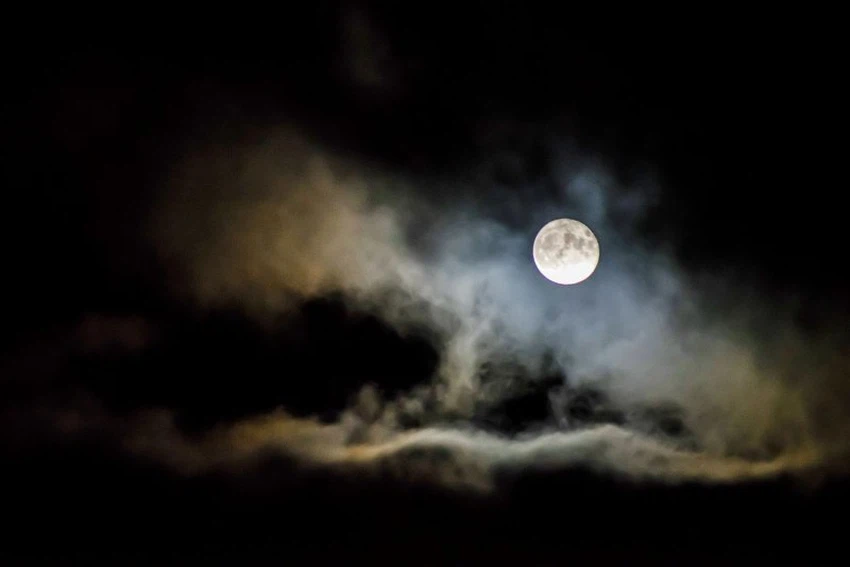Moon babies is a rare disease that prevents children from being exposed to sunlight
Weather of Arabia - The sun is considered a vital source of life on Earth. It provides us with energy and provides our body with the necessary vitamin D. However, there is a rare group of children who live in constant darkness and are unable to be exposed to the sun’s rays. These children suffer from a rare disease known as “children of the moon.” Is this disease? What are its causes?
What is the disease of moon children?
Answer: XP is a rare genetic disorder characterized by the inability of the skin to repair damage caused by ultraviolet rays. In severe cases, it becomes necessary to completely avoid exposure to sunlight. This disease can appear in anyone regardless of gender. Or its origin, but Japanese people are six times more likely to develop the disease than people in the rest of the world, and cases of XP occur at a rate of one in 250,000 people.
The cause of the illness of the moon children
Xeroderma pigmentosum is a recessive (non-contagious) hereditary disease. This means that in order for the child to be infected with it, he must carry two copies of the causative gene, one from the father and the other from the mother. Ultraviolet rays from the sun lead to the destruction of the genetic material (DNA) in the Skin cells, and in the normal state the body repairs this damage.
As for patients with xeroderma pigmentosum, the body does not repair this damage, and as a result, the skin becomes thin, and spots of color changes appear on it.
The effects of the moon children's illness on their lives
Individuals with People with XP have up to 1,000 times the risk of melanoma.
Children with this disorder are called “moon children,” and this nickname reflects the severe state of sensitivity they live in. It is not as romantic a situation as some imagine, but rather it is a great challenge that these children face.
Lives of people with XP
The life of those suffering from xeroderma pigmentosum is a nocturnal one, as they have no choice but to stay indoors during the day, waiting for darkness to fall. It can be said that they are not vampires as they are portrayed in fairy tales, but they remain enemies of the sun, or in fact the sun is their enemy.
These individuals are called "moon children" or "lunars" due to their inability to appear normally except under the moonlight. While turning off the lights and entering darkness can terrify the hearts of normal children, those with this disease consider the darkness a sociable partner, as this darkness can have a positive effect on their psyche, during which they can leave their home confinement and wander the streets without fear of its darkness.
According to the statements of the Tunisian doctor Muhammad Al-Zaghal, who diagnosed many patients, this disease is considered fatal for unprotected individuals, as it grows in the face and can cause it to be disfigured, and those infected with the disease can only live for between 10 and 15 years , but thanks to prevention. And with the right health care, people can get through this and live to be seventy or even eighty years old.
Symptoms of moon children disease
Symptoms of this disease usually begin around the age of two years and include:
- Skin burns appear quickly when exposed to light sunlight, and these burns remain without healing.
- Skin ulcers form after exposure to sunlight.
- Blood vessels form under the surface of the skin in the form of a spider-like network.
- Patches of skin discolouration appear, and get worse over time.
- Peeling of the skin occurs.
- Shows extreme sensitivity to light.
- It increases the risk of developing skin cancer at a very young age.
- Corneal ulcer .
- Swelling or inflammation of the eyelids.
- Weak mental abilities.
- Delay in their growth rate.
- Loss of hearing ability.
- Weakness in the muscles of the legs and arms.
Treatment of moon children's disease
Although there is no effective treatment for this disease, there are strategies to deal with it and protect those affected, including the following:
- Ensure comprehensive protection from the sun's rays. Even light from windows or fluorescent lamps, exposure to which is considered dangerous, should be avoided.
- Wear protective clothing when going out in the sun.
- Use sunscreen with a high protection factor.
- Wear sunglasses designed to protect the eyes from the sun's ultraviolet rays.
- Adopt wearing long-sleeved shirts and long pants to reduce exposure to direct sunlight.
These measures can help reduce damage resulting from the effects of the sun on people with this disease.

Moonchildren's disease is a rare disease that brings with it many challenges, but there is always hope, and efforts must be directed towards supporting research and raising awareness about this disease to ensure progress in treating it and providing better opportunities for moonchildren to live a healthy and happy life.
Also know:
Iris, the new Corona mutant, what do we know about it?
Herring syndrome...challenges and effects of the Moroccan earthquake
Sources:
Arabia Weather App
Download the app to receive weather notifications and more..



